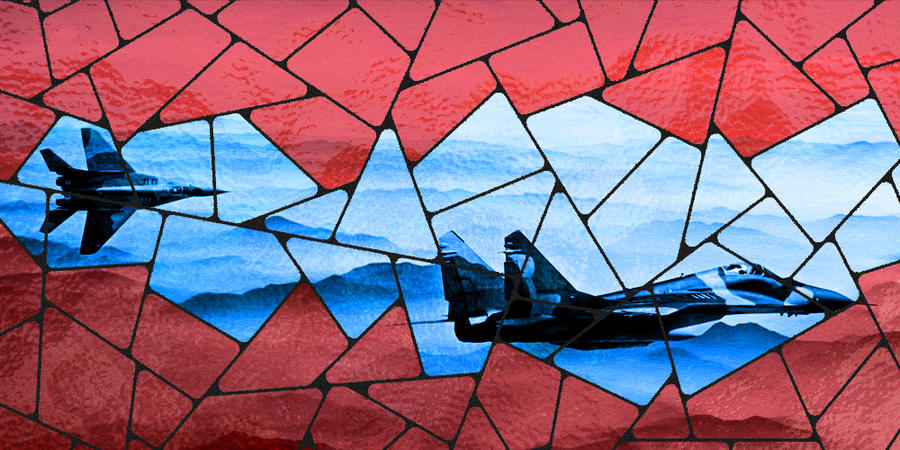What is mosaic warfare?
Illustration: Eniola Odetunde
The military is preparing for its “mosaic warfare” strategy that will piece together various unmanned aircraft on the battlefield.
This week, the Journal of Aerospace Information Systems published a new paper by Leidos expert Kevin Albarado that details the possible artificial intelligence (AI) behind it.
Why you should know: Like shards of glass in a mosaic, the power of mosaic warfare is in the collective result of many diverse pieces. The more advanced those pieces, the more effective the mosaic, so the Pentagon is pushing the limits of AI fighter pilots.
- Earlier this year, DARPA’s ACE program demonstrated AI can now reliably outperform human fighter pilots in a dogfight.
The big challenge: In addition to being highly capable, combat AI must also be trustworthy within the context of a mission.
Building this trust will require a reliable decision-making framework.
In the next phase of the ACE program, several contractors including Dynetics, a Leidos subsidiary, are competing to build this framework.
- Dynetics has created a battle decision-making system called Alpha Mosaic, which emphasizes a symbiotic relationship between warfighters and AI.
- With the Alpha Mosaic framework, human pilots have the power to interject and override AI decisions.
From the source: “If we’re to successfully integrate AI into air combat, humans must be included in the processing loop, and this interaction must be frictionless,” Albarado said. “AlphaMosaic allows humans to insert commands at various levels of the decision-making loop without superseding an ongoing strategy or tactic. When we talk about trust, that’s what you want—to get the job done, but trust that the AI will take the human’s wishes into account.”
Please contact the Leidos media relations team for more information.

